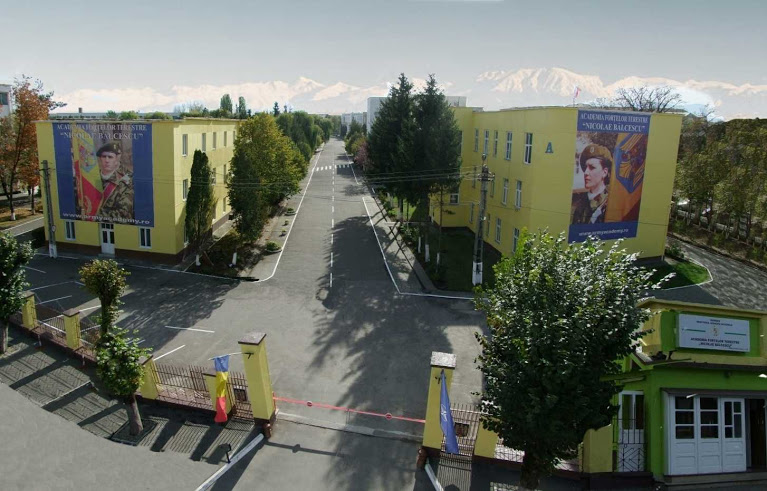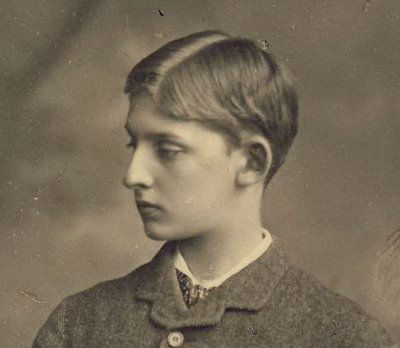|
Nicolae Bălcescu Land Forces Academy
The Nicolae Bălcescu Land Forces Military Academy ( ro, Academia Forțelor Terestre "Nicolae Bălcescu”) is an institute of higher military education located in Sibiu, Romania. The institution was established July 1, 1920, at the initiative of Minister of War Ioan Rășcanu, through Decree 5376/1920 signed by King Ferdinand I of Romania. It is named after Nicolae Bălcescu, a Romanian Wallachian soldier and leader of the 1848 Wallachian Revolution The Wallachian Revolution of 1848 was a Romanian liberal and nationalist uprising in the Principality of Wallachia. Part of the Revolutions of 1848, and closely connected with the unsuccessful revolt in the Principality of Moldavia, it sough .... References External links Official site {{DEFAULTSORT:Nicolae Balcescu Land Forces Academy Education in Sibiu Military academies of Romania 1920 establishments in Romania Educational institutions established in 1920 Greater Romania ... [...More Info...] [...Related Items...] OR: [Wikipedia] [Google] [Baidu] |
Academia Fortelor Terestre Nicolae Balcescu
An academy ( Attic Greek: Ἀκαδήμεια; Koine Greek Ἀκαδημία) is an institution of secondary or tertiary higher learning (and generally also research or honorary membership). The name traces back to Plato's school of philosophy, founded approximately 385 BC at Akademia, a sanctuary of Athena, the goddess of wisdom and skill, north of Athens, Greece. Etymology The word comes from the ''Academy'' in ancient Greece, which derives from the Athenian hero, ''Akademos''. Outside the city walls of Athens, the gymnasium was made famous by Plato as a center of learning. The sacred space, dedicated to the goddess of wisdom, Athena, had formerly been an olive grove, hence the expression "the groves of Academe". In these gardens, the philosopher Plato conversed with followers. Plato developed his sessions into a method of teaching philosophy and in 387 BC, established what is known today as the Old Academy. By extension, ''academia'' has come to mean the accumulation, de ... [...More Info...] [...Related Items...] OR: [Wikipedia] [Google] [Baidu] |
Sibiu
Sibiu ( , , german: link=no, Hermannstadt , la, Cibinium, Transylvanian Saxon: ''Härmeschtat'', hu, Nagyszeben ) is a city in Romania, in the historical region of Transylvania. Located some north-west of Bucharest, the city straddles the Cibin River, a tributary of the river Olt. Now the capital of the Sibiu County, between 1692 and 1791 and 1849–65 Sibiu was also the capital of the Principality of Transylvania. Nicknamed ''The City with Eyes'', the city is a well-known tourist destination for both domestic and foreign visitors. Known for its culture, history, gastronomy and diverse architecture, which includes the iconic houses with eyes that gave Sibiu its nickname, the city has garnered significant attention since the beginning of the 21st century. In 2004, its historical center began the process of becoming a UNESCO World Heritage Site. Sibiu was designated the European Capital of Culture in 2007. One year later, it was ranked "Europe's 8th-most idyllic place to l ... [...More Info...] [...Related Items...] OR: [Wikipedia] [Google] [Baidu] |
Romania
Romania ( ; ro, România ) is a country located at the crossroads of Central, Eastern, and Southeastern Europe. It borders Bulgaria to the south, Ukraine to the north, Hungary to the west, Serbia to the southwest, Moldova to the east, and the Black Sea to the southeast. It has a predominantly temperate- continental climate, and an area of , with a population of around 19 million. Romania is the twelfth-largest country in Europe and the sixth-most populous member state of the European Union. Its capital and largest city is Bucharest, followed by Iași, Cluj-Napoca, Timișoara, Constanța, Craiova, Brașov, and Galați. The Danube, Europe's second-longest river, rises in Germany's Black Forest and flows in a southeasterly direction for , before emptying into Romania's Danube Delta. The Carpathian Mountains, which cross Romania from the north to the southwest, include Moldoveanu Peak, at an altitude of . Settlement in what is now Romania began in the Lower Pale ... [...More Info...] [...Related Items...] OR: [Wikipedia] [Google] [Baidu] |
Ministry Of National Defence (Romania)
The Ministry of National Defence ( ro, Ministerul Apărării Naționale — MApN) is one of the eighteen ministries of the Government of Romania. The current acting Minister of National Defence is . Ministry The Ministry of National Defence is the specialized body of the central public administration submitted to the Government conducting the national defence activity according to the stipulations of law and to the strategy of national security, with a view to safeguarding national sovereignty, state independence and unity, territorial integrity and constitutional democracy. The Ministry of National Defence is responsible to the Parliament, the Supreme Council of National Defence and the Government for implementation of provisions of the Constitution, laws in force, decisions of the Supreme Council of National Defence and of the Government, of international treaties ratified by Romania in fields of its activity. Structure and function The Ministry of National Defence is ... [...More Info...] [...Related Items...] OR: [Wikipedia] [Google] [Baidu] |
Ioan Rășcanu
Ioan Rășcanu (October 1, 1878 – February 25, 1952) was a Romanian general during World War I. He held the post of Minister of War from September 27, 1919 to December 16, 1921. After entering politics, he was elected deputy in Parliament, and served as Mayor of Vaslui (1938–1942) and Bucharest (1942–1944). Arrested in 1947 by the early communist regime, he died several years later at Sighet Prison. Early life He was born in 1878 in Cahul, in south-western Bessarabia (now in Moldova), the son of Elefterie and Elena Rășcanu. Soon after, the family moved to Vaslui, where the parents taught at School Nr. 1 for boys. Growing up, he attended this school, where he befriended his classmate, Gheorghe Mironescu, who later became Prime Minister. After graduating the High School for Sons of Military in Iași, Rășcanu went to Bucharest in July 1891, where he enlisted in the School for Artillery and Engineering Officers, graduating in July 1893 with the rank of second lieutenant. ... [...More Info...] [...Related Items...] OR: [Wikipedia] [Google] [Baidu] |
King Of Romania
The King of Romania (Romanian language, Romanian: ''Regele României'') or King of the Romanians (Romanian: ''Regele Românilor''), was the title of the monarch of the Kingdom of Romania from 1881 until 1947, when the Romanian Workers' Party proclaimed the Romanian People's Republic following Michael I of Romania, Michael I's forced abdication. History The state had been internationally recognized as a principality since 1862, after the creation of the United Principalities, a personal union between Moldavia and Wallachia, at that time vassal states of the Ottoman Empire. Alexandru Ioan Cuza, Alexander I became ''domnitor'' (ruling prince) after the official unification of the two formerly separate states, being elected prince of both states in 1859. He was deposed in 1866 by a broad coalition of the main political parties, after which Parliament of Romania, parliament offered the throne to Prince Karl of Hohenzollern-Sigmaringen who subsequently became the new "Domnitor of Roman ... [...More Info...] [...Related Items...] OR: [Wikipedia] [Google] [Baidu] |
Ferdinand I Of Romania
Ferdinand (Ferdinand Viktor Albert Meinrad; 24 August 1865 – 20 July 1927), nicknamed ''Întregitorul'' ("the Unifier"), was King of Romania from 1914 until his death in 1927. Ferdinand was the second son of Leopold, Prince of Hohenzollern and Infanta Antónia of Portugal, daughter of Ferdinand II of Portugal and Maria II of Portugal. His family was part of the Catholic branch of the Prussian royal family Hohenzollern. In 1889, Ferdinand became Crown Prince of the Kingdom of Romania, following the renunciation of his father (in 1880) and older brother, Wilhelm (in 1886), to the rights of succession to the royal crown of Romania. From the moment he settled in Romania, he continued his military career, gaining a series of honorary commands and being promoted to the rank of corps general. He married in 1893 Princess Maria Alexandra Victoria, later known as Queen Marie of Romania, granddaughter of Queen Victoria and Emperor Alexander II and daughter of Alfred, Duke of Saxe-C ... [...More Info...] [...Related Items...] OR: [Wikipedia] [Google] [Baidu] |
Nicolae Bălcescu
Nicolae Bălcescu () (29 June 181929 November 1852) was a Romanian Wallachian soldier, historian, journalist, and leader of the 1848 Wallachian Revolution. Early life Born in Bucharest to a family of low-ranking nobility, he used his mother's maiden name, in place of his father's name, ''Petrescu'' (his mother was originally from Bălcești, Vâlcea County now, then Argeș County). His siblings were Costache, Barbu, Sevasta and Marghioala, and his father died in 1824. As a boy, Bălcescu studied at the Saint Sava College (from 1832), and was a passionate student of history. At the age of 17, he joined the Wallachian Army, and, in 1840, took part, alongside Eftimie Murgu and Cezar Bolliac, in Mitică Filipescu's conspiracy against Prince Alexandru II Ghica. The plot was uncovered, and Bălcescu was imprisoned in Mărgineni Monastery, where he remained for the following two years. The rough imprisonment conditions led to Bălcescu contracting tuberculosis, which left irrever ... [...More Info...] [...Related Items...] OR: [Wikipedia] [Google] [Baidu] |
Romanians
The Romanians ( ro, români, ; dated exonym '' Vlachs'') are a Romance-speaking ethnic group. Sharing a common Romanian culture and ancestry, and speaking the Romanian language, they live primarily in Romania and Moldova. The 2011 Romanian census found that just under 89% of Romania's citizens identified themselves as ethnic Romanians. In one interpretation of the 1989 census results in Moldova, the majority of Moldovans were counted as ethnic Romanians.''Ethnic Groups Worldwide: A Ready Reference Handbook By'' David Levinson, Published 1998 – Greenwood Publishing Group.At the time of the 1989 census, Moldova's total population was 4,335,400. The largest nationality in the republic, ethnic Romanians, numbered 2,795,000 persons, accounting for 64.5 percent of the population. Source U.S. Library of Congress "however it is one interpretation of census data results. The subject of Moldovan vs Romanian ethnicity touches upon the sensitive topic ofMoldova's national i ... [...More Info...] [...Related Items...] OR: [Wikipedia] [Google] [Baidu] |
Wallachia
Wallachia or Walachia (; ro, Țara Românească, lit=The Romanian Land' or 'The Romanian Country, ; archaic: ', Romanian Cyrillic alphabet: ) is a historical and geographical region of Romania. It is situated north of the Lower Danube and south of the Southern Carpathians. Wallachia is traditionally divided into two sections, Muntenia (Greater Wallachia) and Oltenia (Lesser Wallachia). Dobruja could sometimes be considered a third section due to its proximity and brief rule over it. Wallachia as a whole is sometimes referred to as Muntenia through identification with the larger of the two traditional sections. Wallachia was founded as a principality in the early 14th century by Basarab I after a rebellion against Charles I of Hungary, although the first mention of the territory of Wallachia west of the river Olt dates to a charter given to the voivode Seneslau in 1246 by Béla IV of Hungary. In 1417, Wallachia was forced to accept the suzerainty of the Ottoman Emp ... [...More Info...] [...Related Items...] OR: [Wikipedia] [Google] [Baidu] |
1848 Wallachian Revolution
The Wallachian Revolution of 1848 was a Romanian liberal and nationalist uprising in the Principality of Wallachia. Part of the Revolutions of 1848, and closely connected with the unsuccessful revolt in the Principality of Moldavia, it sought to overturn the administration imposed by Imperial Russian authorities under the ''Regulamentul Organic'' regime, and, through many of its leaders, demanded the abolition of boyar privilege. Led by a group of young intellectuals and officers in the Wallachian Militia, the movement succeeded in toppling the ruling Prince Gheorghe Bibescu, whom it replaced with a Provisional Government and a Regency, and in passing a series of major progressive reforms, announced in the Proclamation of Islaz. Despite its rapid gains and popular backing, the new administration was marked by conflicts between the radical wing and more conservative forces, especially over the issue of land reform. Two successive abortive coups were able to weaken the Gove ... [...More Info...] [...Related Items...] OR: [Wikipedia] [Google] [Baidu] |
Education In Sibiu
Education is a purposeful activity directed at achieving certain aims, such as transmitting knowledge or fostering skills and character traits. These aims may include the development of understanding, rationality, kindness, and honesty. Various researchers emphasize the role of critical thinking in order to distinguish education from indoctrination. Some theorists require that education results in an improvement of the student while others prefer a value-neutral definition of the term. In a slightly different sense, education may also refer, not to the process, but to the product of this process: the mental states and dispositions possessed by educated people. Education originated as the transmission of cultural heritage from one generation to the next. Today, educational goals increasingly encompass new ideas such as the liberation of learners, skills needed for modern society, empathy, and complex vocational skills. Types of education are commonly divided into formal, ... [...More Info...] [...Related Items...] OR: [Wikipedia] [Google] [Baidu] |







